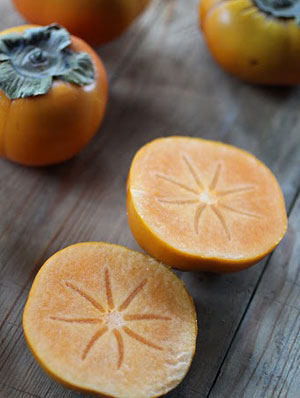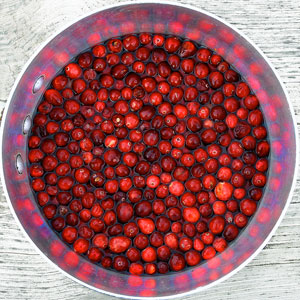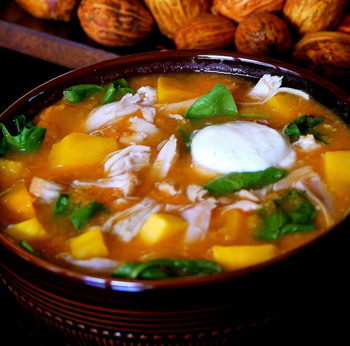
“Don’t you EVER bite into a green persimmon…it will turn your mouth INSIDE OUT!!!” That is what Grandmother, Mimi’s grandmother, my great, great grandmother would exclaim about this fruit. Tart and sour, the unripe persimmons are about as useful as a boar’s teat, but the ripe persimmons are lovely, flavorful, and quite delicious. “They’ve got to be DEAD ripe,” according to the grand dame Mimi herself.
Because of their extreme astringency, the persimmon will most often make you pucker, but once the sour cells within the fruit are “bletted" or partially rotted the fruit becomes much more palpable. Killed by cold, the astringent cells actually rot somewhat and cause the fruit to take on a sweeter flavor, and, thus, the old adage that persimmons are not ripe until the first frost. There is a whole chemistry lesson here but I shan’t attempt to explain the how’s and why’s – just know persimmons most often become ripe after the first frost.

 One of my favorite things about Fall is apples…and trips to the apple orchard. This year, without a trip to one of my favorite apple orchards in the Twin Cities area marked on the calendar, I was beginning to think it would be the first time in many, many years that I didn’t get to an apple orchard. The sign along Highway 10 that made me turn my car down a winding country road in search of my favorite fall fruit, turned into a wild goose chase. But then, an angel appeared and offered me all the apples I could possibly want or need.
One of my favorite things about Fall is apples…and trips to the apple orchard. This year, without a trip to one of my favorite apple orchards in the Twin Cities area marked on the calendar, I was beginning to think it would be the first time in many, many years that I didn’t get to an apple orchard. The sign along Highway 10 that made me turn my car down a winding country road in search of my favorite fall fruit, turned into a wild goose chase. But then, an angel appeared and offered me all the apples I could possibly want or need. When I was a kid and my parents took us out for breakfast, I always ordered a glass of cranberry juice. I loved the way it sparkled like rubies in a glass. But most of all, I loved its mouth-puckering tartness that sent shivers down my jaws when I drank it. (Even typing that sentence caused the same reaction.)
When I was a kid and my parents took us out for breakfast, I always ordered a glass of cranberry juice. I loved the way it sparkled like rubies in a glass. But most of all, I loved its mouth-puckering tartness that sent shivers down my jaws when I drank it. (Even typing that sentence caused the same reaction.) Oft unknown and underutilized, celeriac or celery root is a vegetable with white flesh and knobby light-brown skin. Its texture is not far from parsnips. Its flavor is like celery: fresh, bright, and almost citrusy. In fact they are related. The celery root grows green stems and leaves above the soil surface that look much like celery and can be used just like celery. The greens have a more pronounced celery flavor but the stems are woody and hollow like bamboo. The herb lovage, another celery cousin, is like this too. The stems can be used as straws in mixed drinks like the Bloody Mary or my take on the
Oft unknown and underutilized, celeriac or celery root is a vegetable with white flesh and knobby light-brown skin. Its texture is not far from parsnips. Its flavor is like celery: fresh, bright, and almost citrusy. In fact they are related. The celery root grows green stems and leaves above the soil surface that look much like celery and can be used just like celery. The greens have a more pronounced celery flavor but the stems are woody and hollow like bamboo. The herb lovage, another celery cousin, is like this too. The stems can be used as straws in mixed drinks like the Bloody Mary or my take on the  It is a little known fact that I can speak Japanese. True, I only know two words, but I say them well.
It is a little known fact that I can speak Japanese. True, I only know two words, but I say them well.